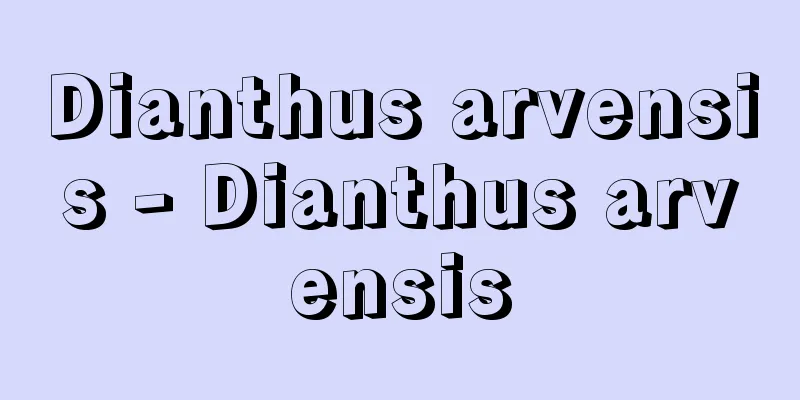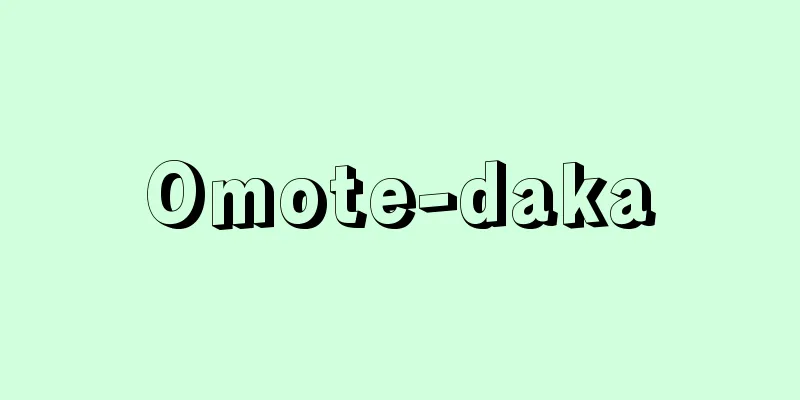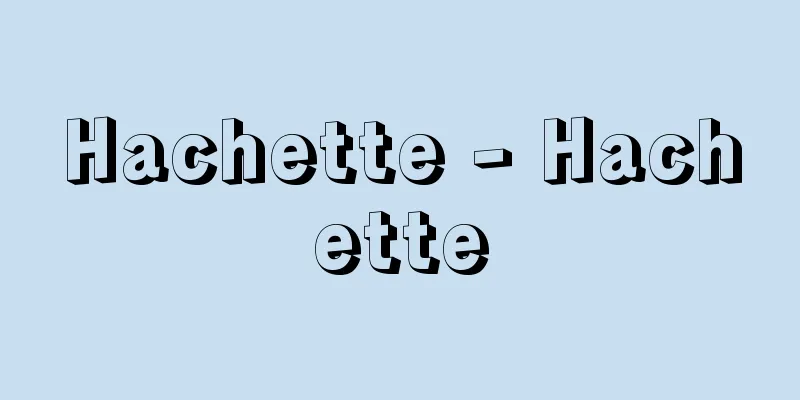Life education - Seikatsukikyoiku

|
This education positions children as independent citizens, and while organizing and developing their life tasks, needs, and activities, aims to form the knowledge, skills, and attitudes necessary for real life into "living and working academic ability." It means "education by life, for life." It is opposed to authoritarian, formalistic, and indoctrination-based education that focuses on instilling conceptual knowledge that is detached from real life into children. However, the content of this concept differs depending on the era, society, and person who advocates it, and is by no means unambiguous. [Kazuo Otsuki] HistoryHistorically, Pestalozzi is considered to have been the first to advocate life education. His famous suggestion that "life is cultivated" is a concise expression of his ideas. His ideas were subsequently inherited and tried by many people, but Dewey's educational ideas and their trials are particularly important. In a situation where, as capitalist society matured, the home ceased to be a place of production and the educational function of the church was degenerating, Dewey introduced "work," a typical activity of social life, into schools, and attempted to socialize schools and make them a part of life. However, his emphasis on life = experience is based on the empiricism of pragmatism, and has been criticized for falling into subjectivism, psychologism, and functionalism. [Kazuo Otsuki] Lifestyle education in JapanIn Japan, on the one hand, there was life education that placed emphasis on children's interests and experiences as a means to make top-down indoctrination more effective, but on the other hand, as the crisis of Japanese capitalism intensified from the end of the Taisho era through the Showa era, a life education was established that aimed to liberate children by facing the realities of life and forming a realistic awareness of and motivation for life, as seen in the Life Writing Method. This was an "education that teaches life through life" based on a strict "life platform" and based on the principles of freedom, realism, and collectivism. There was active debate in principle about the specific method of its implementation, and it remains an issue even today. After the Second World War, pragmatist education was introduced from the United States, and for a time, empirical life education, which teaches "learning by doing," attracted attention and was put into practice. On the other hand, with the changes in the political and social environment, the necessity of life education as an educational activity that helps the children of the general public to shape themselves as agents of historical change aiming at liberation from the control of authorities and social oppression came to be asserted. From this standpoint, efforts were made to inherit and develop the realist life education of the prewar period. There, emphasis was placed on effectively linking the realities of the lives children live with science or culture, and the formation of "academic ability that can be applied and used in daily life" was aimed at as agents of historical change. [Kazuo Otsuki] "Zest for life" and life education In July 1996, the Central Council for Education submitted its first report, "On the state of education in Japan with a view to the 21st century," proposing that children be given the "power to live" and "leisure." The "power to live" referred to here is [Kazuo Otsuki] "History of Educational Thought on Life and Work" by Yanagi Hisao (1962, Ochanomizu Shobo)" ▽ "A Theory of Life Education" by Funayama Kenji (1960, Mugi Shobo)" ▽ "A Draft of Curriculum Reform - Creating Easy-to-Understand Lessons and Enjoyable Schools" edited by the Japan Teachers' Union (1976, Hitotsubashi Shobo)" ▽ "50 Years of Life Education in Japan - Continuing to Deal with Children" edited by the Japan Life Education Federation (1998, Gakubunsha)" ▽ "Theory, Practice and Evaluation of Integrated Learning" by Takaura Katsuyoshi (1998, Reimeishobo)" ▽ "Integrated Learning that Changes the Course of Education - How to Think About It and How to Approach It" by Kojima Kunihiro (1998, Gyosei)" ▽ "100 Years of Life Education - Cultivating the Joy of Learning and the Ability to Live" by Kawai Akira (2000, Seirinsha) [References] | | | | | | |Source: Shogakukan Encyclopedia Nipponica About Encyclopedia Nipponica Information | Legend |
|
子供を主体的生活者として位置づけ、その生活的課題や要求や活動を組織し発展させつつ、実生活に必要な知識・技能・態度を「生きて働く学力」として形成しようとする教育。「生活による、生活のための教育」をいう。実生活から遊離した観念的な知識を子供に注入することを主とした権威主義、形式主義、注入主義の教育に対するものである。しかし、その概念内容は時代や社会によって、また主張者によって異なり、けっして一義的ではない。 [大槻和夫] 沿革歴史的にみると、生活教育の最初の主張者はペスタロッチであるとされている。彼の有名な提言「生活が陶冶(とうや)する」は、その思想の端的な表現である。その後、彼の思想は多くの人々によって受け継がれ、試行されたが、とくに重要なのは、デューイの教育思想とその試行である。彼は、資本主義社会の成熟に伴い、家庭が生産の場であることをやめ、教会の教育的機能が退化していく状況のなかにあって、社会生活の典型的活動である「作業」を学校へ導入し、学校を社会化し生活化しようとした。しかし、その生活=経験の重視は、プラグマティズムの経験主義に立脚しており、主観主義、心理主義、機能主義に陥っているという批判もなされている。 [大槻和夫] 日本における生活教育日本の場合には、一方において、上からの国民支配のための教化をいっそう有効にするための手段として、子供の興味や経験を重視するという形の生活教育もあったが、他方では、大正年代末から昭和にかけて、日本資本主義の危機が高まるようになって、生活綴方(つづりかた)にみられるような、生活現実を直視し、リアルな生活認識と生活意欲を形成しつつ、子供たちを解放しようとする生活教育が成立した。それは、厳しい「生活台」の上にたつ、自由とリアリズムと集団主義を原理とする、「生活で生活を教える教育」であった。その具体的な進め方については、原理的な論争も活発に行われ、今日においても課題として残されている。 第二次世界大戦後、アメリカからプラグマティズムの教育が移入され、一時、「なすことによって学ぶ」経験主義の生活教育が注目され、実践された。一方で、政治的・社会的環境の変動に伴い、権力的支配や社会的抑圧からの解放を目ざす歴史の変革主体として、国民大衆の子供たちが自らを形成していくのを助ける教育活動としての生活教育の必要性が主張されるようになった。そうした立場から、戦前のリアリズムの生活教育の継承と発展が図られるに至った。そこでは、子供たちが生きる生活現実と科学ないし文化との有効な関連づけが重視され、歴史変革の主体として「生活に生きて働く学力」の形成が目ざされた。 [大槻和夫] 「生きる力」と生活教育その後1996年(平成8)7月、中央教育審議会(中教審)は、第一次答申「21世紀を展望した我が国の教育の在り方について」を提出し、子供に「生きる力」と「ゆとり」を与えるよう提案した。ここでいう「生きる力」とは、 [大槻和夫] 『柳久雄著『生活と労働の教育思想史』(1962・御茶の水書房)』▽『船山謙次著『生活教育論』(1960・麦書房)』▽『日本教職員組合編『教育課程改革試案――わかる授業楽しい学校を創る』(1976・一ツ橋書房)』▽『日本生活教育連盟編『日本の生活教育50年――子どもたちと向き合いつづけて』(1998・学文社)』▽『高浦勝義著『総合学習の理論・実践・評価』(1998・黎明書房)』▽『児島邦宏著『教育の流れを変える総合的学習――どう考え、どう取り組むか』(1998・ぎょうせい)』▽『川合章著『生活教育の100年――学ぶ喜び、生きる力を育てる』(2000・星林社)』 [参照項目] | | | | | | |出典 小学館 日本大百科全書(ニッポニカ)日本大百科全書(ニッポニカ)について 情報 | 凡例 |
<<: Consumers' Cooperative - Seikatsukiyoudokumiai
Recommend
Ségréen (English spelling)
…Located in the basin of the Loire and its tribut...
"Oka no Yadono Gyoki"
…The Yomei Bunko Library has one scroll (the volu...
α,α-Dichlorotoluene - α,α-dichlorotoluene
…It is also called benzylidene chloride, α, α'...
Eastern Country Seasonal Almanac
A book from the end of the Yi dynasty that records...
Gold coin value clause - Kinkakachi yakkan
...A clause in a monetary credit contract that pr...
Household product demand function
...In this case, the price of each product and th...
Katakura Group
…Founder of the Katakura Group. Born as the eldes...
Emperor Jing
187 BCE - 141 BCE China, former Han Emperor Liu Qi...
Plaster - plaster
A plastering material unique to Japan. Made by mix...
Asam, CD (English) AsamCD
…Two German artist brothers from the Baroque peri...
Pollution compensation system
Damage caused by pollution can sometimes involve d...
Scapellum rubrum (English spelling) Scapellumrubrum
…[Shigeo Gamou]. … *Some of the terminology that ...
Uda-hoshi
A treatise on haiku. Edited by Li You and Kiyoriku...
Hansanseong Fortress
… [Second Period: Era of Federation of Lords and ...
Aino-ma
Refers to the space between two rooms. In shrine a...









